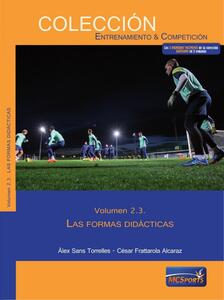In this Volume 2.3.: "The Didactic Forms" is about specifying the "how"; that is, the ways we will use to train that allow the team to assume the proposed objectives.
We will therefore expose each and every one of the "tools" that will allow us to develop in training those aspects that this new proposal entails, as well as a series of previous concepts that will help clarify the process to follow until the choice of a specific didactic form, and the design of a training task.
Knowing and having these tools, will allow us to carry out the training sessions for each cycle, each stage and each process, in an absolutely specific way for the team and for the players, in relation to the different objectives set in each session.
These methodological resources will be based in particular on the knowledge, design and application of different DIDACTIC FORMS (FD's). These FD's, for the training to be effective, must present a very specific feature, such as being based on the REAL GAME SITUATIONS that the player will encounter and face in the development of the competition.
In this Volume we will explain the different Teaching Forms that conform to these approaches, taking into account that all of them can and should be interrelated to each other, and that we only "classify" them in order to unify criteria and terminology when designing, applying and relating them to the different work objectives.
Each Didactic Form has the necessary variables so that it can be adjusted to the specific objective that each coach has set for his session, the level of his players, the characteristics of the game, at the time of the learning process, etc. In other words, these Didactic Forms are actually the manifestation of the game itself, but starting from an alleged reference that helps us establish logical criteria consistent with what is established in the Collective Game.




